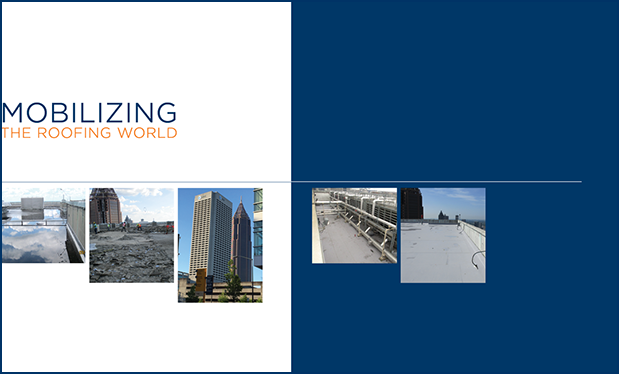Employees have mixed feelings about AI in the workplace
A recent survey conducted by The Workforce Institute at Kronos Inc. shows four out of five employees believe artificial intelligence (AI) in the workplace will make work more empowering and engaging; however, they also think employers' reluctance to discuss the topic is causing fear and concern, according to www.constructiondive.com.
The "Engaging Opportunity: Working Smarter with AI" survey polled 3,000 workers in eight countries and found 58 percent of organizations haven't discussed AI's possible effects on the workforce with their employees. Eighty-two percent of survey respondents said AI is an opportunity to improve their jobs. Thirty-four percent are concerned the technology could someday take their jobs—a viewpoint held by 42 percent of Generation Z employees (those born between the mid-1990s and early 2000s). Two-thirds of workers surveyed said they would be more comfortable with the use of AI in the workplace if employers were more transparent about the future integration of the technology.
Sixty-four percent of respondents said they would welcome AI if it simplified or automated internal processes and helped balance their workloads. Some researchers are using AI to uncover ways to protect workers, such as University of Waterloo researchers in Ontario who are using AI to gain insight regarding how skilled laborers can reduce wear-and-tear injuries. The outcomes of such research likely would benefit many workers within the construction industry.
From robots in construction and manufacturing to algorithms in employee data analysis, AI is moving into all aspects of the workplace. Employers must be transparent and show workers where AI already is being used in their organizations and where the technology could be used or expanded. Realistically, employees likely won't be replaced immediately, but workers should be informed about which jobs will use AI in the future so they can increase their skill sets or choose different careers to prepare for the changes.
For now, many readings regarding AI are only projections. A Gartner study predicts AI could bring in 2.3 million more jobs to offset the 1.8 million jobs it replaces; however, the new jobs are expected to require higher-level or specialized skills.
The construction industry is preparing for AI as the technology continues to advance. A January 2018 Midwest Economic Policy Institute report used 2017 employment statistics from the Bureau of Labor Statistics and estimates from McKinsey & Company to predict automation will displace nearly 3 million construction workers during the next 40 years. And the momentum is expected to continue as more companies develop robotics and AI systems geared toward addressing the industry's productivity issues.
Many small-sized construction companies do not plan to invest in tech
Less than 35 percent of small-sized construction companies plan to make investments at some level this year in technologies that could help their businesses, a recent customer survey from small-business funding site Kabbage revealed, according to www.constructiondive.com.
More than 65 percent of contractors who responded to the survey indicated they do not have a plan to invest in tools such as big data solutions or mobile technologies. The same percentage of respondents also are either neutral, against or not likely to spend more than 20 percent on social media advertising.
The survey also revealed less than 40 percent of small-sized construction firms plan to invest in cyber security despite the threat of cyberattacks and other computer crimes. However, more than 50 percent of contractors said they plan to streamline their operations during 2018 by eliminating paper and manual processes.
In general, the construction industry is moving forward with the adoption of technologies, but surveys such as the one conducted by Kabbage indicate there are contractors who remain resistant to technology despite the benefits or protections it could provide.
Companies of all sizes can be victims of cyberattacks, and even companies with a low level of technology integration—such as those with employees who use tablets or smartphones to conduct business—can be vulnerable. To better protect company data, attorney Michelle Schaap of Chiesa Shahinian & Giantomasi, West Orange, N.J., says contractors should keep their firewalls and anti-virus software up to date, as well as partition information so if one device is attacked, the rest of a company's devices and digital technologies will not be affected.
ARMA completes energy-efficiency research project

Aerial view of campus |
The Asphalt Roofing Manufacturers Association (ARMA) has completed an eight-year research project designed to help researchers compare the energy efficiency of reflective and highly insulated low-slope roof systems.
ARMA partnered with the EPDM Roofing Association and the Polyisocyanurate Insulation Manufacturers Association to sponsor the analysis of a reroofing project at the Onondaga County Correctional Facility in Jamesville, N.Y. During a seven-year period, roof temperature and indoor temperature data were recorded every 15 minutes from the following roof systems on four buildings with identical roof layouts at the facility:
- A conventional roof with 4-inch-thick polyisocyanurate foam insulation and an EPDM membrane
- A roof with 4-inch-thick polyisocyanurate foam insulation with a white reflective TPO roof membrane
- A vegetative roof with 4-inch-thick polyisocyanurate foam insulation
- A highly insulated roof with 8-inch-thick polyisocyanurate foam insulation and a reflective TPO roof membrane
Using the collected data, ARMA researchers could examine the effects of roof insulation R-values, roof reflectance values and vegetative roofing on roof systems' energy-efficiency performance in a northern climate.
"This study presented the perfect opportunity to evaluate how a cool roofing system compared to vegetative roofs and highly insulated roofing options in terms of energy efficiency," says Michael Fischer, ARMA's vice president of codes and regulatory compliance. "Not only were we able to gauge a cool roof's performance, but we also gained valuable insight into how all four roofing systems performed in a northern climate over time."
To learn more about the Onondaga County Correctional Facility research project, contact ARMA by clicking here.



